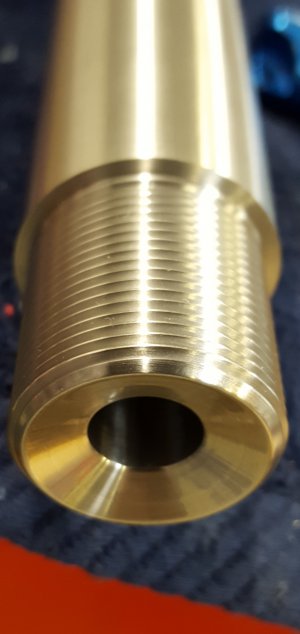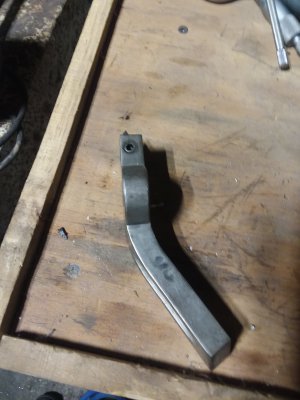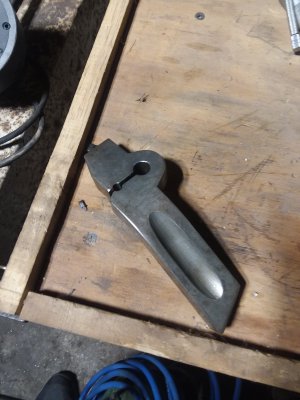I've watched all your videos, and I may be overly anal about all this, but I see evidence of some rigidity issues. Hard to know if these are the source of your treading woes, but I would first try to get all these tuned out as much as possible. Here is what I observe and what I would do to check/correct things if this were my lathe:
- Watching the first video where you are threading away from the chuck at 200 RPM and indicating to the side of the QCTP, there is evidence of jitter indicating tool chatter in the cutting operation and that something in the setup is allowing the QCTP to flex under load. Makes me wonder if the QCTP is sitting dead flat onto the top surface of the compound. If the T-nut securing the QCTP to the compound sticks up above the top surface of the compound, the QCTP will rock under load.
- The second video from cross slide to bed ways show minor displacement, but it's enough that I question the fit of the cross slide gib. I would remove the cross slide gib, clean the dovetails surface, and stone the gib on all surfaces to remove any burrs. I would also check to see if the surfaces that mate to the dovetails are flat with some bluing.
- In the videos where you are indicating to the cutting tool and the back of the compound, it appears to me that the compound is flexing as the thread-cutting engages. This looks like too much movement to me. The indicator to the tool shows the tool deflecting downward about 5/10ths, and the indicator to the back of the compound shows that surface being tetter-tottered upward almost 0.001". The possible sources of that flex include:
- The bottom surface of the compound rotation ring is not flat where it sits on the surface of the cross slide
- there is debris between the mating surfaces of the compound and the cross slide
- the securing bolts that lock the compound to the cross slider are not tight
- the t-nuts in the circular race inside the cross slide are weak or broken or being pulled up for some reason. Other users have had issues with one of the t-nuts pulling up when the compound is angled just so and the t-nut ends up positioned just below the access hole. This has been discussed at this thread.
- The gibs in the compound are not fitted and adjusted properly.
- I would remove the compound from the cross slide, clean up all the interfaces, and search for the source of the compound rocking.
Looking at the resulting thread grooves, I still question whether the cutting tool is on CL with the spindle. I would check that with a DTI.
Also, the best estimate I've seen for SFM for annealed 416 is 120. Published SFM's I've seen range from 110 to 175. If your part is 1.25" diameter, using SFM of 120, that works out to a spindle speed of 366 RPM using HSS cutting tool. If the part is 1.5" diameter, using a 100 SFM, that works out to 250 RPM. I haven't threaded 416, but with 316 and 304 if you go too slow, the material tears rather than cuts and produces the kind of finishes you are seeing. I'd love to see a thread cut at 350 RPM for comparison.
Hope this helps.




